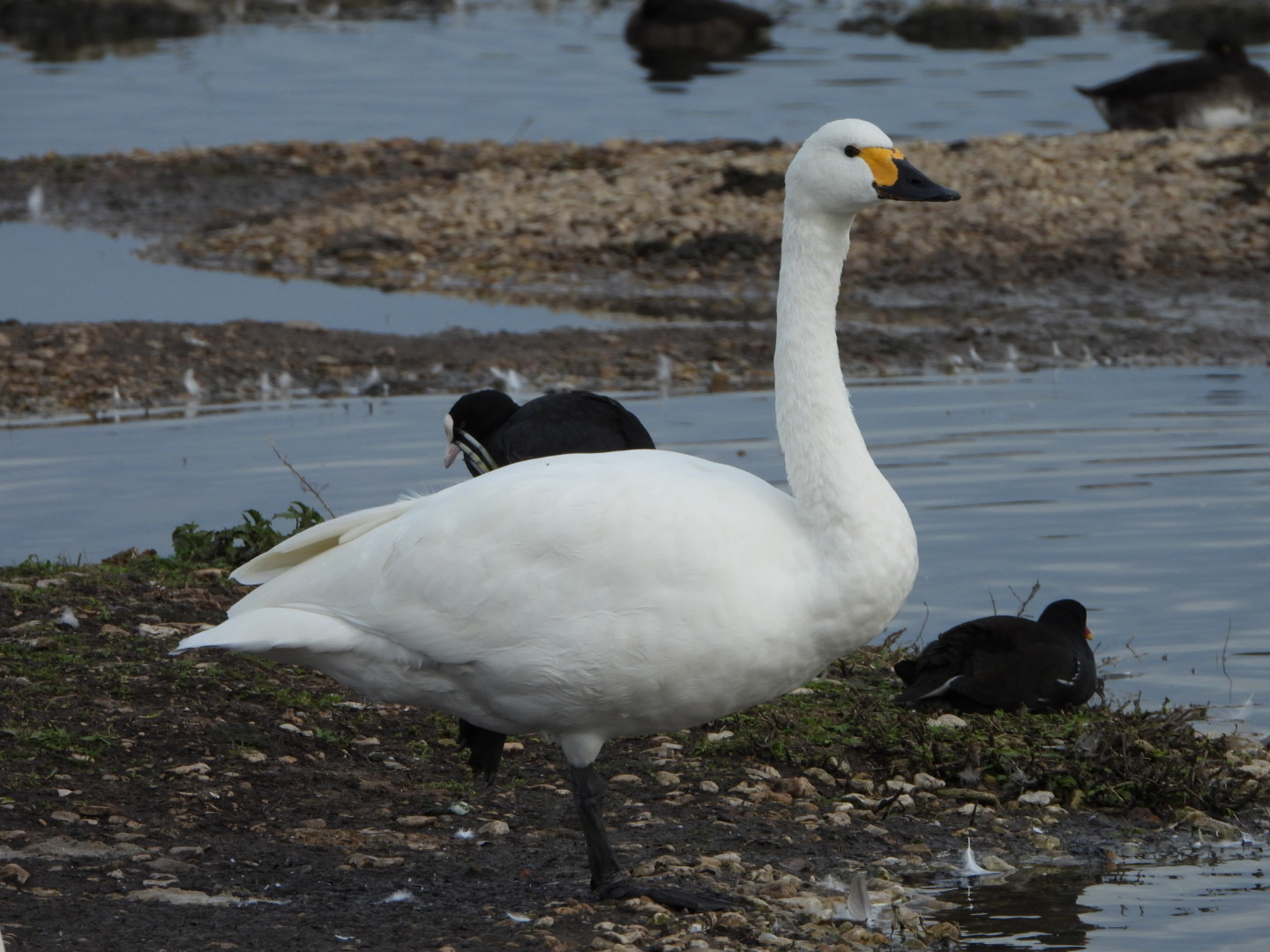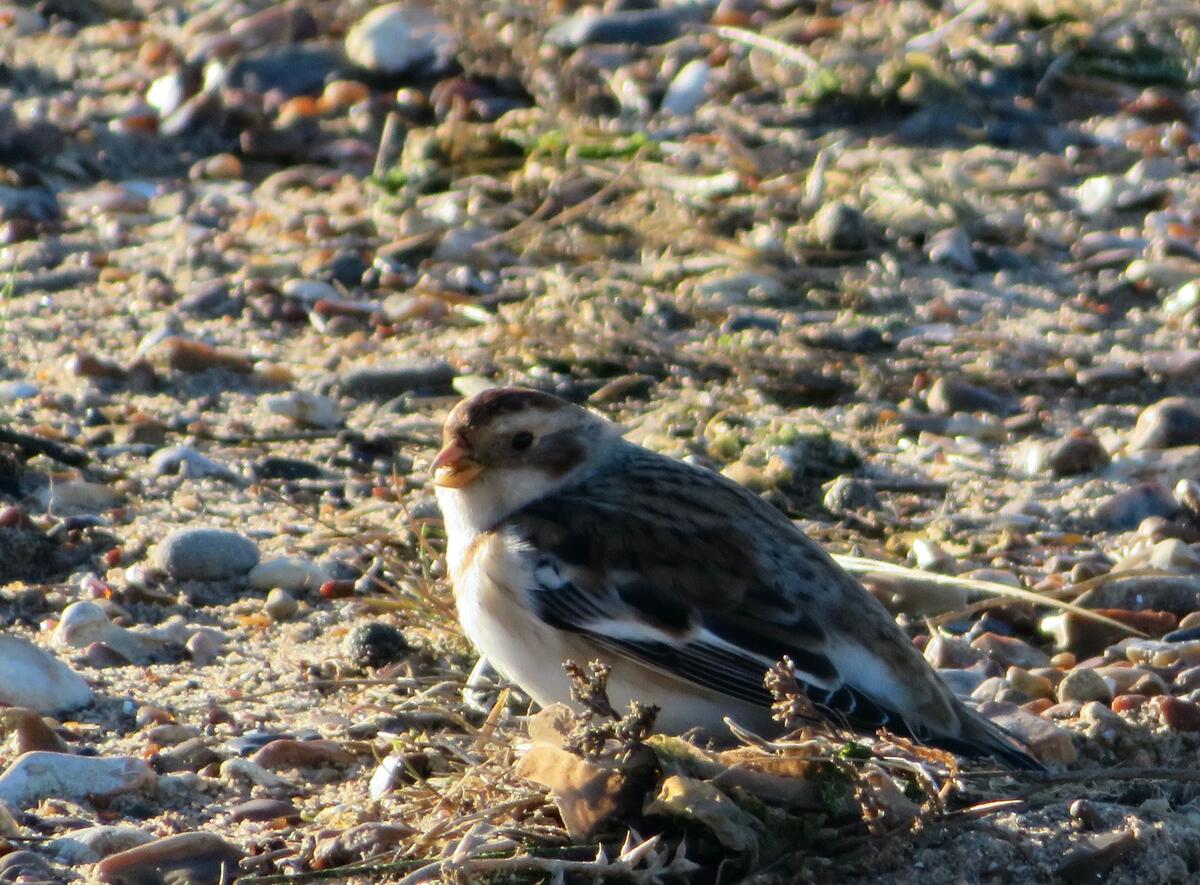Wildlife Jottings Nov 2021
Wildlife jottings from Vernham Dean
As I write this, I can see a frost covering the lawn and bushes outside, a reminder that winter is on the way. The leaves are turning to beautiful shades of yellow, orange, red etc and falling from the trees. Lots of leaf clearing from the lawn over the next week or two!!
During the Autumn a remarkable movement of birds occurs across the UK. Even birds that we commonly see in the village, Robin, Chaffinch, Goldcrest etc may not be the ones that were here in the summer months. Many bird species such as those listed above, will move in from the continent to enjoy our milder winters and exist side by side with our resident species.
One of the more obvious signs of winter visitors arriving is when the European Thrushes turn up. We have good populations of both Redwing and Fieldfare here in Vernham Dean and they are usually fairly easy to find.
Over the last few days, a flock of Redwing has been feeding in the Yew trees in the churchyard. Just stand near one of the trees for a few minutes and if they are feeding in there you will soon see them moving around the inside of the tree. It will not take them long to strip the Yew trees of their berries.
Normally by this time in the year Fieldfares are also easy to see around the village -often feeding on the Bury Dene Playing Fields. But that is not the case this year. For, as yet unknown reasons, Fieldfares have been late turning up across the whole of the UK. It maybe there is still plenty of food for them in their summer haunts and accordingly no need to move on yet. No doubt we will find out at some point when all the data from observers across Europe has been analysed. Although I have yet to see (or hear – you usually hear them first as they fly over – a loud chuk noise) any in Vernham Dean there are now a few reports coming in from across the UK and Hampshire of some arriving.
If during the winter it gets too cold here or they run out of a ready supply of food, they will move on further south and disappear for a bit.
The sight of these winter thrushes arriving tells us that winter is on the way. It is exciting to see and hear these birds knowing the great distances they come from to spend a few months with us, before they return to their breeding grounds across Europe.
There are many spectacular sights across the country, courtesy of our winter visiting birds. Some of my favourites are:
Solway Firth (between Cumbria and Dumfries & Galloway) – large flocks of Barnacle Geese spend the winter months here. This is a pretty black and white goose and a great sight to see flocks of several thousand birds wheeling over you in the cold winter air. It’s a long way north – the Scottish borders – but well worth the trip if you can get there.
Slimbridge Wildfowl reserve, Gloucestershire – a little closer to home. Numbers of the Bewick Swans and White-fronted geese that winter here have reduced over the years, but still worth the effort of going to see. Bewick Swans are a more delicate bird than the Mute Swans we will routinely see on lakes here. It is white like the Mute Swan, a little smaller, but with a black and yellow bill. Watching the family groups of these swans greet each other as they land, coming in for roost, is rather special.

Welney Wildfowl Reserve, Cambridgeshire – in winter evenings you can sit in a heated (yes, that’s right a heated) hide and watch a spectacular site of thousands of Whooper Swans coming into roost. Another white swan with a black and yellow beak – a bit more yellow on this one compared to the Bewick Swan. The reserve feed the swans and provide an extended day for them by using artificial lights. In the middle of winter, if you arrive mid-afternoon, you will see a large, flooded area in front of the hide, with ducks and geese on it. As darkness approaches the swans start flying in, eventually filling all the available space on the water. The sound of their wings and their calls as they come in and land adds to the drama of the evening. It’s a sight and sound experience I will never tire of.
Norfolk – during the winter months Pink-footed geese winter on the fields and marshes of Norfolk – mostly the north Norfolk coast area. Another lovely goose and another sight and sound experience to treasure, as skeins of geese fly over you, calling to each other. And, whilst you are there a walk along the beach to see the seals – just starting to pup at this time of year – and a flock of Snow bunting flitting along in front on you, all makes, for me a perfect day.
Perhaps surprisingly all the above has been or even for some can be seen in Hampshire, not in any great number. Most years we get a few of these birds visiting on the way through. Even the Snow Bunting – but rare – there was one a year or two ago that spent the winter on the beach near Titchfield Haven Nature Reserve on the south coast. For a mostly white bird they can be very difficult to see as their colouring camouflages them well on a pebbly beach.

And returning to the village, to finish, any walk across the fields around the village at the moment will provide some good winter sights. The occasional fox will slink away from you – they invariably see you before you see them. There are good numbers of wintering birds feeding on the freshly harvested and ploughed fields. A large flock of Lesser Black backed Gulls is a constant feature – either feeding on the fields near to Old Manor Farm Road or just flying over the village.
Red Kites are seen less often in the summer months as they pair up to breed. But at this time of year, they will roost together in small groups. At the moment, a small group of Red Kite roost in the trees between Vernham Dean and Upton. As they leave their roost in the morning, they can be seen twisting and turning over the fields nearby looking for food.
Lots to see and well worth the effort to walk around our beautiful village!
Natural History Book of the Month.
Tracking the Highland Tiger by Marianne Taylor is the story of the search for a true Scottish Wildcat. Do any pure ones still exist in the wild? With so many cats kept as pets there is an issue about the pure Scottish Wildcat breeding with domestic cats.
The Scottish Wildcat is one of the rarest mammals in the world. Whilst the book explains the problems the Wildcat faces there is some hope as work is underway to help it and to encourage a growth in numbers.